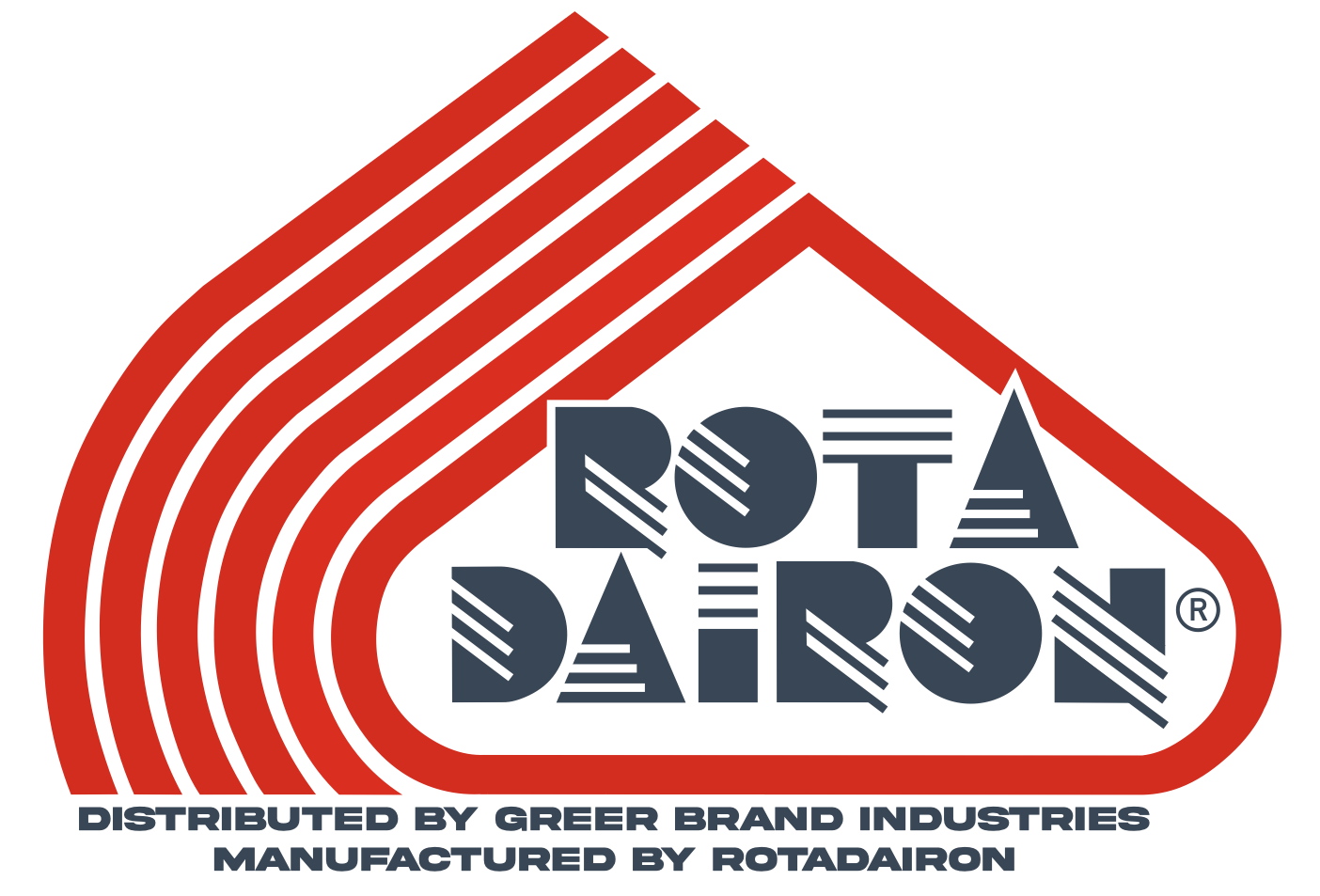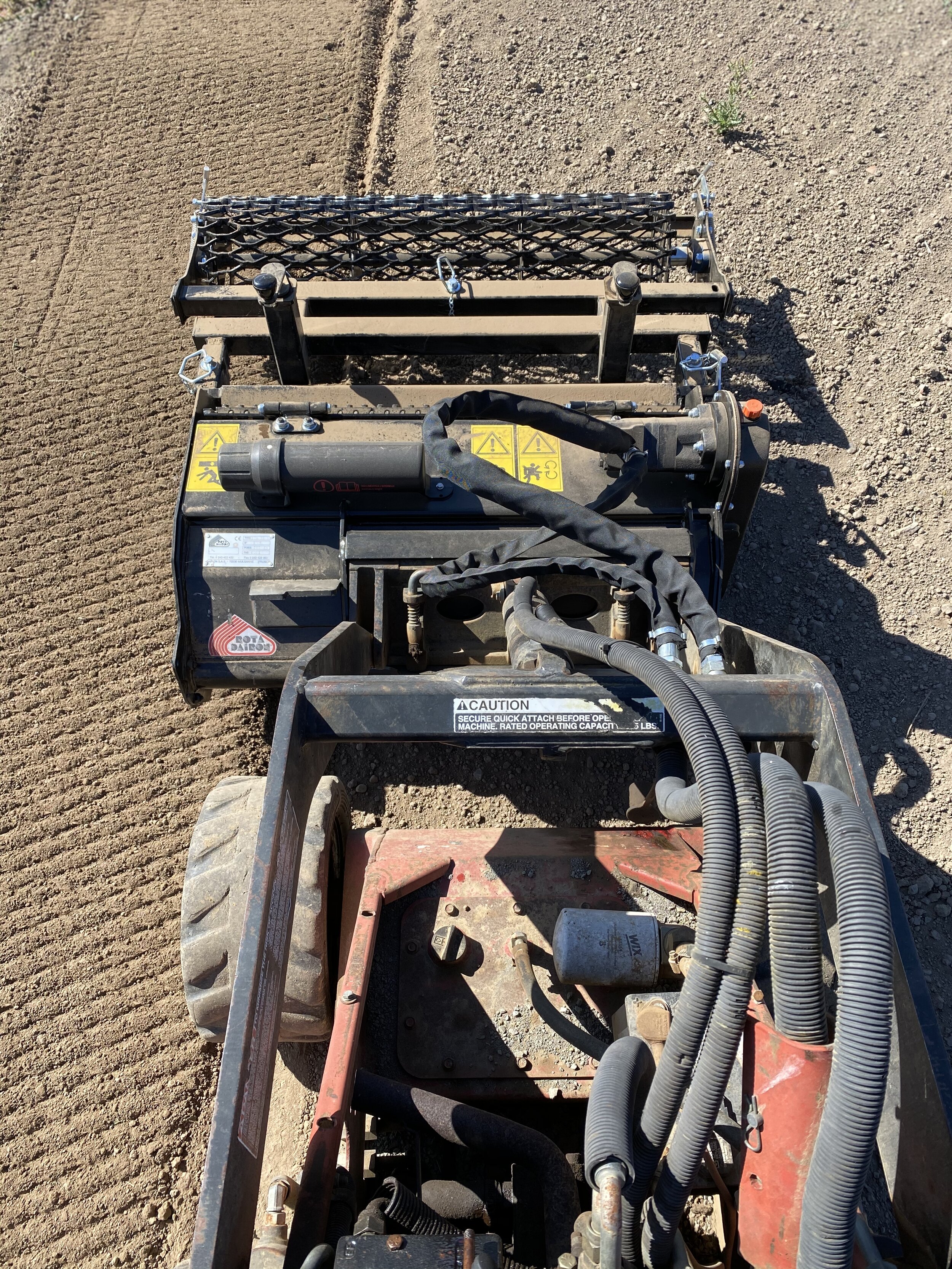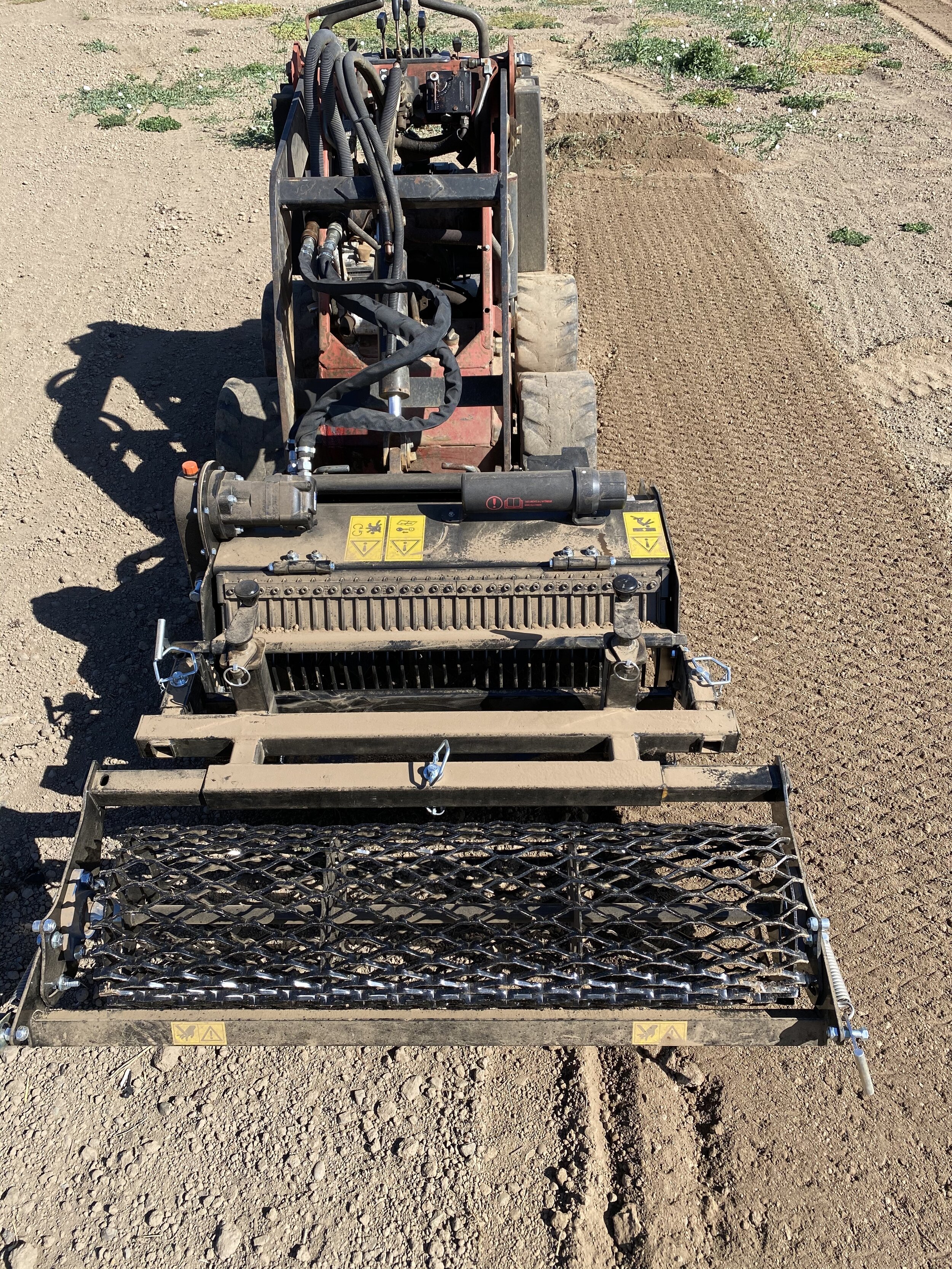“Do I need a wider machine to cover my tracks?”
If you’re asking for a wider machine you’re probably not operating an agricultural model as those units are wide enough to cover tire tracks on both sides of the power unit. That leaves the compact and mid-sized models designed for mini-skids, skids and small to mid-sized tractors. And if your mini-skid is 48” wide and the soil-cultivator designed for the mini-skid (STH36) is only 38” you might be wondering how you’re going to cover your tracks. Fortunately, Rotadairon has already addressed this issue in the design of all its compact to mid sized models. It’s called a “working offset” and here’s how it works.
The vertical blue line represents the center of the attachment point where skid and machine meet.
From that center, 24” to the left is the working offset. From this angle imagine traveling in reverse while operating the machine. To your left you willl notice that your tracks are being covered as you go. When you end one pass, drive to the beginning of your previously tilled row and begin a new row keeping the working width of the machine a couple inches beyond the line of your previous row. In practice this is how that looks:
The same principle applies to the larger machines. In this example, an RD150 instead of the attached RD145 would seem to be a better choice because the floatation tires on our tractor would necessitate a wider machine. But this tractor is a John Deer 4410 and does not have the lift capacity to operate the larger, heavier RD 150. The solution then is to overlap your previous pass by a few inches and also extend the roller bar past the tires.
This video explains and demonstrates in detail how the working offset functions.





